Of course it did. It made the Spanish Empire and then underwrote it until the era of Napolian.
Spanish gold coinage became the international trade system such as it was. In fact understanding the dominance of Spain is central to unhderstanding european histyoty from 1500 throgh 1800. It was the development of fiat money that changed all that.
That triggered the rise of England and France in particular.as break away empires.
Did the Conquest of the New World Save the Spanish Empire?
23 MARCH, 2020 - 12:53 DHWTY
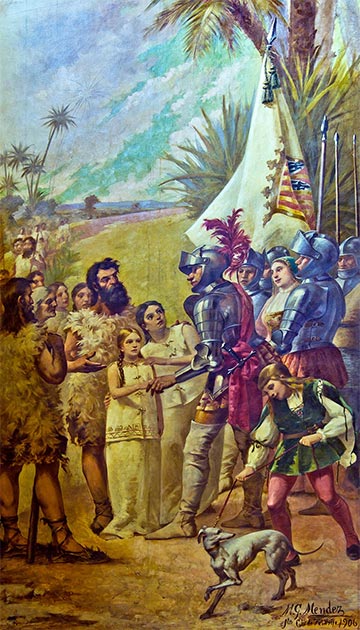
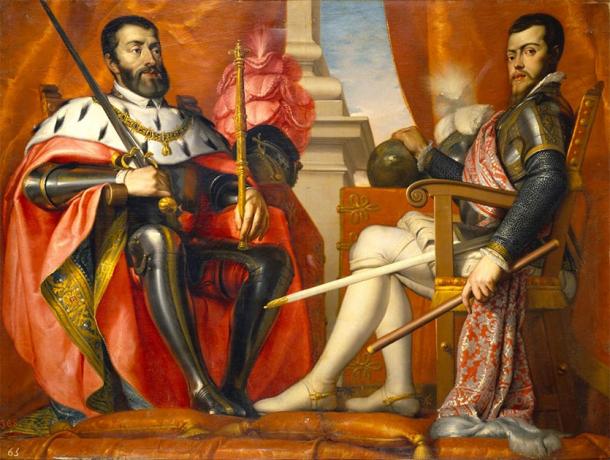
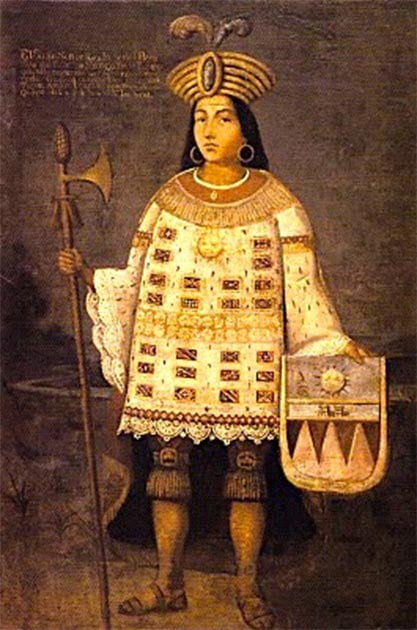
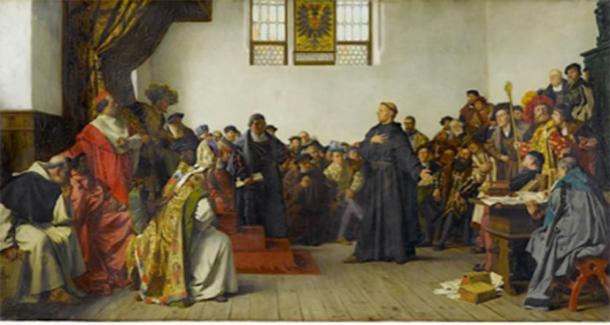
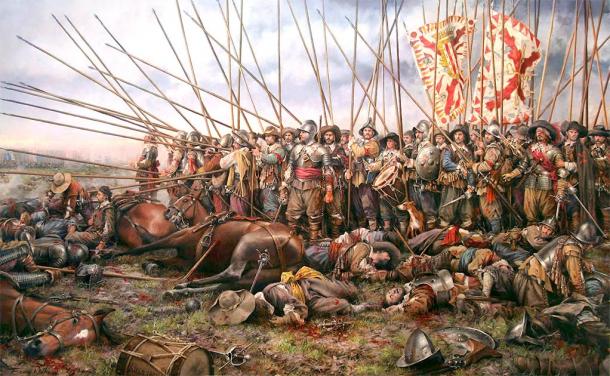
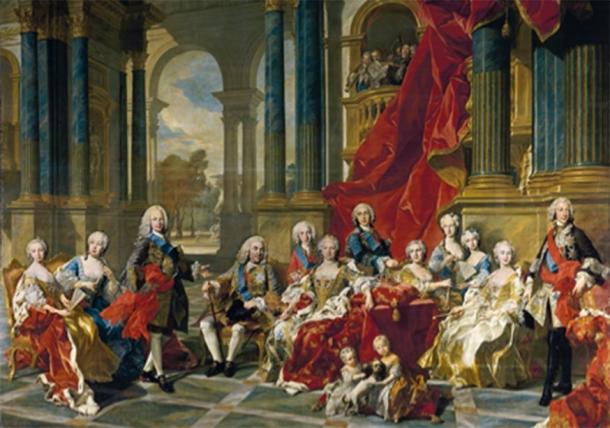
23 MARCH, 2020 - 12:53 DHWTY
The Spanish Empire was one of the earliest (and longest-lasting) European colonial empires. It was established towards the end of the 15th century, when the New World was discovered. The Spanish Empire reached its height during the 16th and 17th centuries.
In addition to being a predominant European power, Spain controlled a large part of North and South America. The fortunes of the Spanish Empire were mixed in the following century. While Spain did not fare so well in Europe, its overseas empire was prospering.
Although the Spanish Empire was able to recover from the setbacks experienced during the early 18th century, the 19th century brought new challenges and marked the beginning of the empire’s demise. The Spanish Empire, however, managed to survive until the 20th century. The withdrawal of Spain from Spanish Sahara (today the disputed territory of Western Sahara) in 1975 marks the end of the empire.
The origins of the Spanish Empire lie in the 15th century. Although the Spanish were still engaged in the Reconquista at that time, most of the Iberian Peninsula was already in Christian hands. The only remaining Muslim state on the peninsula (in fact, since 1249) was the Emirate of Granada.
While the Marinids of North Africa launched incursions into the southern part of the Iberian Peninsula, they failed to make any permanent gains. The last significant Marinid incursion into the Iberian Peninsula , for instance, occurred in 1340, but was repulsed by a Castilian-Portuguese army at the Battle of Rio Salado. The Reconquista was completed in 1492, when Granada fell to the armies of the Isabella I of Castile and Ferdinand II of Aragon, who were known also as the Catholic Monarchs.
The year 1492 may also be regarded to be the beginning of the Spanish Empire. Shortly after the fall of Granada, the Catholic Monarchs gave their support to Christopher Columbus, who had proposed a western sea route from Europe to Asia. Incidentally, Columbus had earlier presented his plans to the Portuguese court, but his request for patronage was denied.
One of the reasons for this was the disagreement between the Portuguese expert and Columbus regarding the distance of this western route. The Portuguese believed that the route would be much longer than what Columbus had in mind, thereby making the voyage impossible.
Although the Portuguese calculations turned out to be correct (or at least, closer to the truth, since the distance is in fact even greater than what they believed), Columbus was an extremely lucky man, since he stumbled upon the Americas. Spain immediately laid claim to the newly-discovered lands.
The Spanish Empire Lays Claim To the New World
The discovery of the New World led to a dispute between Spain and Portugal, the other rising European colonial power. The latter claimed that, under the Treaty of Alcáçovas, signed in 1479, and ratified in 1481 by the Papal bull Aeterni regis , in 1481, all land south of the Canary Islands had been granted to Portugal.

The Spanish Empire conquest of the Canary Islands. (Koppchen / CC BY-SA 3.0 )
Therefore, the New World ought to theoretically ‘belong’ to Portugal. The Spanish countered the claims of the Portuguese by seeking new Papal bulls. Since the pope at that time, Alexander VI, was a native of Valencia, and a friend of Ferdinand, the Spanish easily obtained bulls that were highly favorable to them. The Portuguese, needless to say, were displeased with this new arrangement.
The issue was eventually resolved in 1494 with the signing of the Treaty of Tordesillas . The treaty divided the world into two hemispheres along a north-south meridian 370 leagues west of the Cape Verde islands. The lands to the east would belong to the Portuguese, whereas the lands to the west would go to the Spanish.
As a consequence of the Treaty of Tordesillas, the Spanish were free to establish colonies in the New World and eventually came to dominate that region. Much of South America (with the exception of Brazil), for instance, came under Spanish rule. In the first few decades following the discovery of the Americas; however, the Spanish were not faring very well in their newly-discovered lands.
Until 1510, for instance, the Spanish were not able to establish any permanent settlements on the mainland, and their presence limited to the islands. Furthermore, Spain’s new colonies turned out to be a disappointment, as they were not commercially successful. This situation, however, would soon change when Spain began its colonization of the mainland.
The Spanish and Portuguese colonial empires in the 16th century. (FDRMRZUSA / Public Domain )
The Spanish Empire’s Troubles At Home
In the meantime, the Spanish in Europe had gotten themselves involved in the Italian Wars, a series of wars fought for the control of Italy. The first Italian War (known also as the War of Charles VIII) broke out in 1494 when the French king, Charles VIII invaded Italy, with the intention of claiming the Kingdom of Naples.
This kingdom, however, was part of the Crown of Aragon and therefore the Catholic Monarchs threw their support behind the king of Naples. The war ended in the following year, when Charles was driven out of Italy by the League of Venice, which consisted of the Pope, Spain, the Holy Roman Empire, Milan, and Venice.
Nevertheless, seven more wars were fought between the French and their enemies for the domination of Italy and ended only in 1559. The last five wars were known as the Hapsburg-Valois Wars, which lasted throughout the reign of Charles V, arguably one of the Spanish Empire’s most formidable rulers.

Charles V, Holy Roman Emperor and King of Spain (left) with his son Philip. (EeuHP / Public Domain )
Charles V was born in 1500 in Ghent, Flanders (modern-day Belgium) and was the son of Philip I the Handsome and Joanna the Mad. Philip, in turn, was the son of the Holy Roman Emperor Maximilian I and Mary Duchess of Burgundy, while Joanna was the daughter of the Catholic Monarchs.
Therefore, Charles had a claim to various thrones across Europe. In 1506, following the death of his father, Charles became the Duke of Burgundy, gaining control of the Low Countries as well. In 1516, Charles’ maternal grandfather died and he became the King of Spain (Castile and Aragon), ruling jointly with his mother until her death in 1555.
By the way, Isabella had died in 1504 and Joanna inherited her mother’s throne that year. In 1519, Charles inherited the Archduchy of Austria upon the death of his paternal grandfather. In the same year, Charles was elected Holy Roman Emperor, defeating two other candidates, Francis I, the King of France, and Henry VIII, the King of England.
Thus, by 1519, much of Europe was under Charles’ rule. Soon, much of the New World too would come under Spanish control. In the same year that Charles became Holy Roman Emperor, the Spanish conquistador Hernan Cortes made the first official contact with the mighty Aztec Empire , which dominated central Mexico. By 1521, the Aztecs, who possessed the most powerful empire in Mesoamerica, were defeated by the Spanish.
About a decade later, the Inca Empire, which was the largest pre-Columbian empire in the Americas, was conquered by a handful of Spanish conquistadors led by Francisco Pizarro. The Inca Empire was centered on the Andean mountain ranges and controlled a large part of western South America when the Spanish encountered it. Although the Inca capital, Cusco, fell in 1536, the Inca continued their resistance for several more decades.

The last Inca leader, Túpac Amaru was assassinated in 1572 at the order of the Viceroy Francisco de Toledo of the Spanish Empire. (Brandtol / Public Domain )
The conquest of the Aztec and Inca Empires brought great wealth to Spain, as large quantities of bullion flowed from the New World into the treasury of the Spanish Empire. It was the gold and silver from the Americas that allowed Charles to finance his wars in Europe.
Although Spain and France had made peace at the end of the War of the League of Cambrai (the third of the Italian Wars) in 1516, this peace did not last for long. The election of Charles as Holy Roman Emperor in 1519 led to the fierce rivalry between him and Francis. The French king was angry that he had lost the election and was determined to press his claims on parts of Italy.
Charles, on the other hand, saw himself as the leader of Christendom and was bent on establishing a universal monarchy, which would allow him to wield secular authority over the whole of Europe. As a consequence, the First Hapsburg-Valois War broke out in 1521. Subsequently, Charles and Francis fought each other in another four wars.
The French, however, were not Charles’ only problem. The Protestant Reformation is generally regarded to have begun in 1517 by Martin Luther. As a devout Catholic, Charles sought to defend Catholicism against the Reformation. The Diet of Worms was summoned in 1521 to determine Luther’s fate.

Luther at the Diet of Worms. (Jfhutson / Public Domain )
Curiously, Luther was called before the political authorities, rather than before the Pope or a council of the Catholic Church. In any case, Luther refused to recant and Charles subsequently passed the Edict of Worms, which banned Luther’s writings and declared him a heretic and an enemy of the state.
This, however, not only failed to resolve the problem, but made it worse and soon Catholics and Protestants were at war. The wars of religion continued to ravage Europe long after Charles’ lifetime.
The Habsburg rulers who succeeded Charles also entertained the notion of Spanish hegemony over Europe. Therefore, wars were fought by the Spanish against various European states as well as the Protestants. During these wars, politics and religion often became entangled.
For instance, the war between Spain and France in the last years of the 16th century was part of the French Wars of Religion. Spain’s support for the French Catholics against their Protestant compatriots has been purported to be a disguise for their attacks on the French state.
The Spanish Empire had to deal with internal revolts as well. The Eighty Years War (known also as the Dutch War of Independence) was a revolt by the Seventeen Provinces and resulted in Spain losing its control over much of its territories in the Low Countries.
The many wars drained Spain’s treasury and the empire was bankrupt on several occasions. In addition to financial woes, the European enemies of Spain were also growing more powerful. The Battle of Rocroi in 1643 is often considered to mark the end of Spanish dominance in Europe.

The Battle of Rocroi was the end of the Spanish Empire’s dominance in Europe. (Soerfm / CC BY-SA 3.0 )
This battle was part of the Thirty Years War (another conflict in which religion and politics were intertwined) and saw the defeat of Spain’s Army of Flanders by the French. Nevertheless, Spain was still a force to be reckoned with in Europe.
It was only in 1713, with the signing of the Treaty of Utretch, which ended the War of the Spanish Succession, that the Spanish Empire was at the mercy of the other European powers. As a result of the treaty, the Spanish Empire lost much of its European territories.
The Spanish Netherlands, Naples, Milan, and Sardinia were ceded to Austria, Sicily, and parts of the Duchy of Milan went to the Duchy of Savoy, while Gibraltar and Minorca were given to Great Britain. Nevertheless, Spain was allowed to keep its colonies in the Americas and it was these territories that contributed to Spain’s recovery in the decades that followed.
By the end of the century, however, the reforms introduced by Spain’s new dynasty, the Bourbons, were bearing fruit and the empire’s economy was recovering. In addition, the Spanish enjoyed some military success during this time.

The family of Philip V, the House of Bourbon, the new rulers of the Spanish Empire. (Tm / Public Domain )
For instance, the Spanish captured the British naval base in the Bahamas during the American Revolutionary War, and Naples and Sicily from the Austrians during the War of the Polish Succession. These successes, however, did not last for long, as the 19th century brought new challenges for the empire.
During the Napoleonic Wars, Spain was occupied by the French. The Spanish king, Charles IV, was forced to abdicate the throne in 1808 in favor of his son, Ferdinand VII. Ferdinand too abdicated later that year and Napoleon’s brother, Joseph Bonaparte, became Spain’s new ruler. This arrangement, however, only lasted until 1813, when the Bourbons returned to power.
A much larger problem for the Spanish Empire, however, were the independence movements in Spain’s American colonies. Between 1810 and 1825, Spain lost many of its American colonies, including Paraguay (1811), Argentina (1816), Peru and Mexico (1821), and the region of modern Venezuela, Colombia, Ecuador, and Bolivia (1825).
Although Spain was not a major player in the Scramble for Africa, it did acquire some land on the continent, specifically, in the western part of North Africa. Spanish Sahara, which was obtained in 1884, was Spain’s last colony. Spain withdrew its forces and settlers from the area in 1975.
The Spanish Empire has left a lasting influence on the world. During its heyday as a superpower, Spain profoundly influenced events on Europe and left a mark on the continent’s history. The legacy of the Spanish Empire, however, is even more visible in its former colonies in Central and South America.
The influence of Spain on these countries can still be felt even today. Roman Catholicism and the Spanish language are two of the most notable remnants of the Spanish Empire in that part of the world.
No comments:
Post a Comment